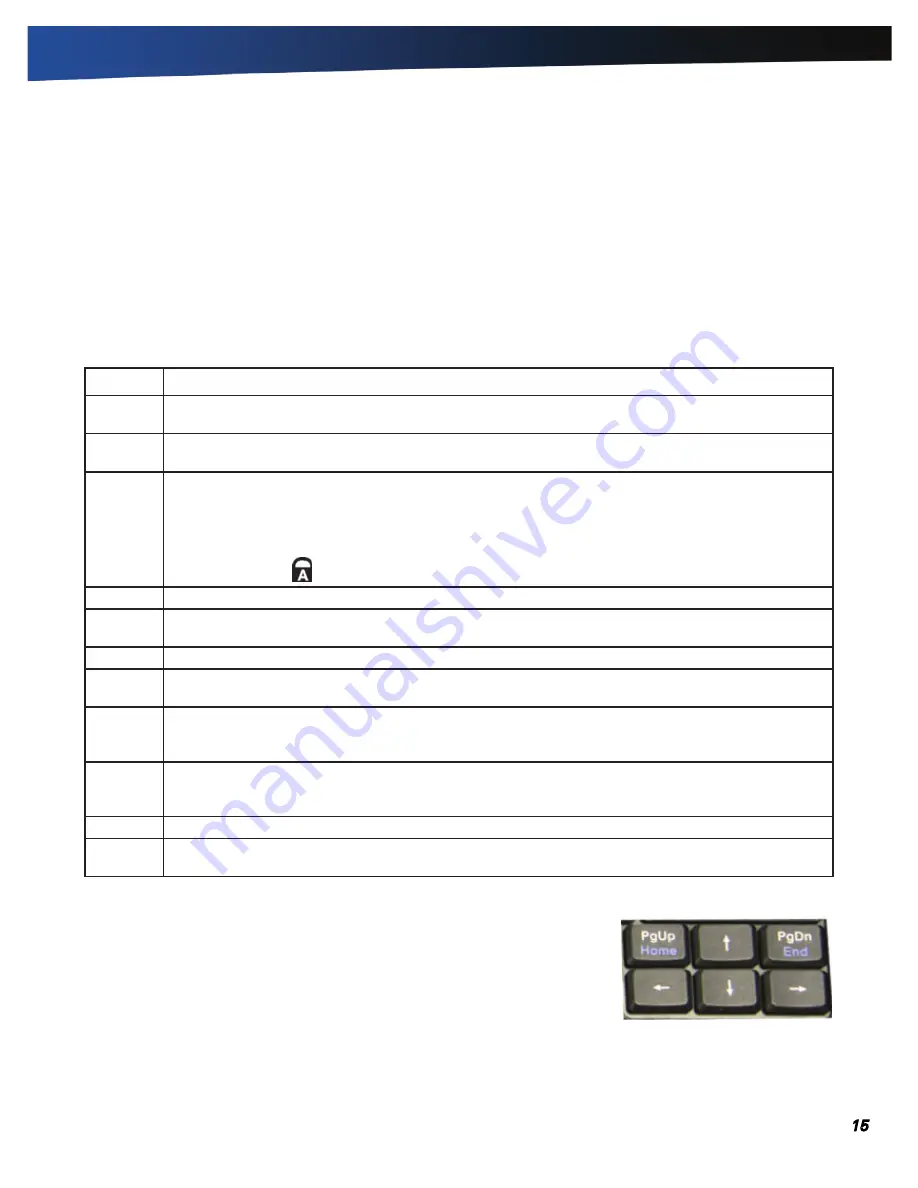
General Dynamics Itronix | 72-0136-005
GD6000 User Guide
Getting Familiar With Your Computer
Primary Keys
Key
Description
Alt
The
ALT
(alternate) key is used with other keys to perform special tasks. On some operating systems
pressing
CTRL+ALT+DEL
twice soft reboots the computer.
Backspace The
BACKSpACE
key, sometimes represented on the keyboard as a left arrow, moves the cursor one
position to the left. The character to the left of the cursor is erased.
Caps Lock Pressing the
CApS LoCK
key one time locks keys
A
through
Z
in the UPPER CASE position. Pressing the
CApS LoCK
key again returns the letters to lower case. While in the upper case mode, pressing the
SHiFT
key results in lowercase characters when entered. You still have to use the
SHiFT
key to display charac-
ters located on the upper portion of the keyboard. For example, press
SHiFT+8
to type an asterisk (*),
even when the
CApS LoCK
key is activated.
The Caps Lock LED
lights when the keyboard is in Caps Lock mode.
Ctrl
The
CTRL
(control) key works with other keys to perform a variety of functions.
Enter
The
EnTER
key signals the computer that you have completed your entry. This is your way of telling the
computer to process the information that you have entered.
Esc
The
ESC
(escape) key allows you to exit a pop-up window or message box.
Prtsc
In Windows, pressing the
pRTSC
(print screen) key or
ALT+pRTSC
key copies the current screen or win-
dow to the clipboard so you can paste it into documents.
Shift
The
SHiFT
key changes the keys
A
through
Z
to the UPPER CASE position. When you press an alphabetic
key, the character appears as a capital letter. When you press
SHiFT
with other keys, the characters on
the upper part of the keys appear. For example, pressing
SHiFT+7
displays an ampersand (&).
Fn
Some special
Fn
(function) keys have been established to perform important tasks when pressed and
held with the
Fn
key. These keys are described later in this document. The
Fn
key legend is color keyed
to other special keys on the keyboard.
spacebar
Use the
SpACEBAR
to enter a space and move the cursor one character to the right.
Tab
The
TAB
key moves the cursor to the next tab stop or field. Tab stops are defined by your operating sys-
tem or application program. Press the
TAB
key to move from one field or text box to another.
Arrow Keys
The arrow keys are defined by the software application.
Up ARRoW
: usually moves the cursor up one line. In some cases, you can use the up
arrow to make selections from menus and scrollable list boxes.
DoWn ARRoW
: usually moves the cursor down one line. In Windows, you can use
the down arrow to make selections from menus and scrollable list boxes.
RiGHT ARRoW
: usually moves the cursor one character position to the right.
LEFT ARRoW
: usually moves the cursor one character position to the left.
Keyboard Basics
The GD6000 features:
Full size keys on a 85-key keyboard
Twelve
function keys
Application launch button
(programmable button)
Embedded
numeric keypad
USB port that enables you to
connect an external keyboard
Keyboard ergonomics
Located below the keyboard, the wide palm rest is ergonomi-
cally designed to provide you with a very comfortable place to
rest your hands while you type.






























